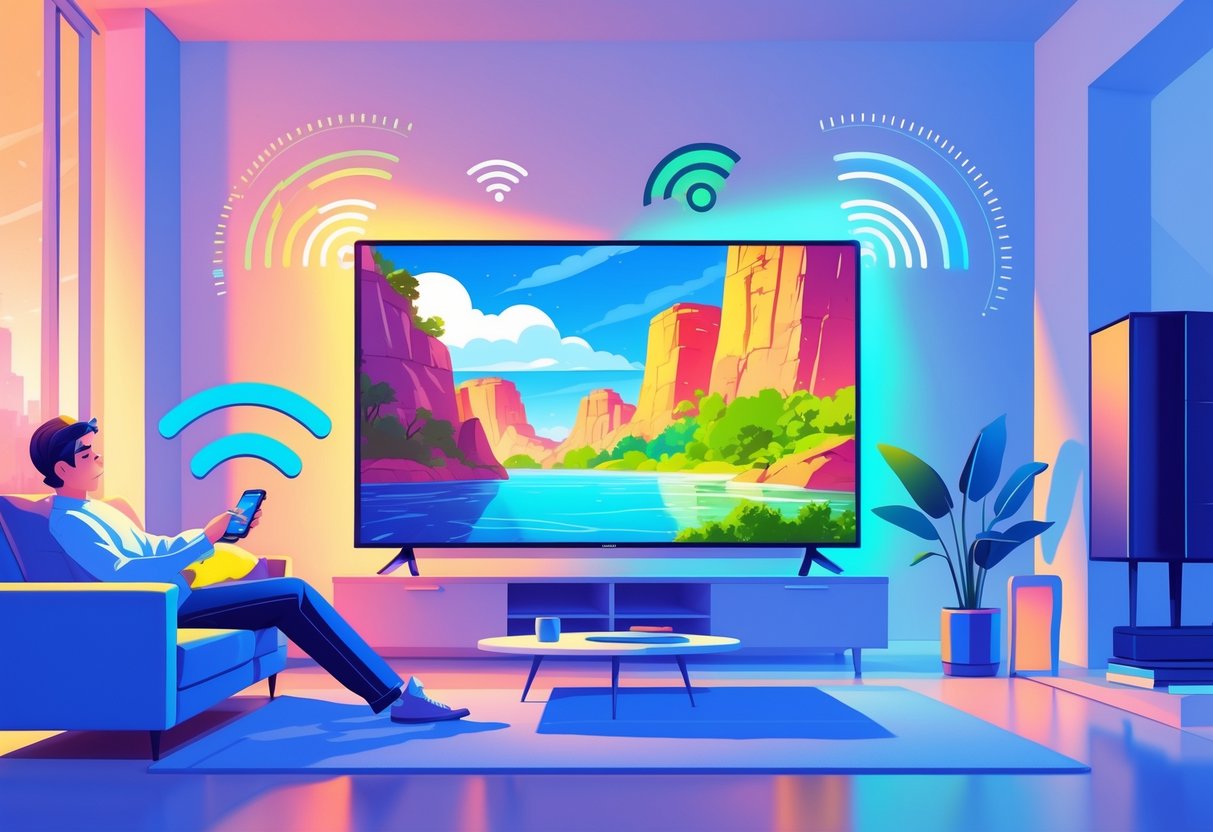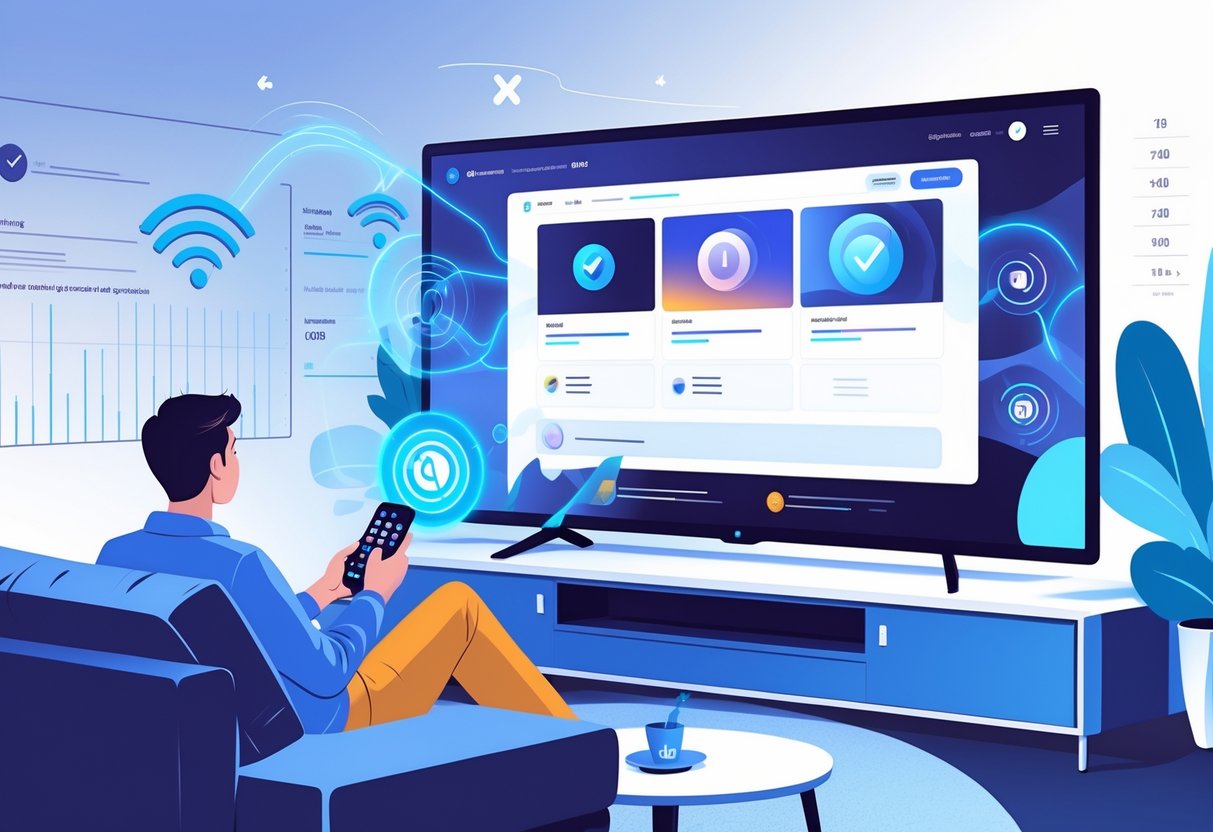
Streaming TV shows without constant buffering is possible with the right techniques to optimize internet speed and device performance. A few simple adjustments, such as improving WiFi connectivity, lowering video quality, and rebooting your router, can significantly reduce lag and keep your favorite series running smoothly.
For those tired of interruptions, these practical solutions can enhance the overall viewing experience.
Many viewers experience interruptions when streaming on platforms like Netflix and Hulu, especially during peak hours or on crowded networks. Factors such as outdated hardware, background apps, and poor connection signals often contribute to these buffering issues.
Learning how to address and prevent these setbacks unlocks a more seamless way to enjoy shows, movies, and live events. Whether watching on a smart TV, mobile device, or computer, applying expert advice for buffer-free viewing can help maximize streaming speed and reliability.
Readers will find actionable tips and learn about specific techniques, such as those shared by both broadband experts and streaming enthusiasts, to stop buffering and enjoy uninterrupted playback. Simple changes can make a noticeable difference, allowing for a frustration-free binge-watching session.
Understanding Buffering and Playback Issues
Buffering occurs when a video stream temporarily pauses to load more data, directly impacting how smoothly content plays back. Playback interruptions, lag, and reduced video quality are often symptoms of buffering problems, and these interruptions can lead to a frustrating streaming experience if not managed properly.
What Causes Buffering While Streaming
Buffering issues are usually triggered by an unstable or slow internet connection. When the available bandwidth cannot keep up with the data demands of video streaming, the player pauses to preload more content.
Other contributing factors include congested home networks, outdated routers, or network interference. Streaming platforms depend on continuous data flow.
If the connection drops or is inconsistent, video content cannot download quickly enough, resulting in pauses or delays. Modern streaming requires not just speed but also consistency, as even minor network hiccups can interrupt playback.
Device limitations can also cause buffering. Older hardware may struggle to decode high-definition streams efficiently.
Additionally, using multiple devices on one network can cause bottlenecks, especially if they are running data-heavy applications like uploads, downloads, or gaming. For further reading, check this guide on how to stop buffering.
How Buffering Affects Video Quality
Buffering problems often force streaming platforms to adjust video quality dynamically. When network speeds drop, the player will switch to a lower resolution to keep playback going without interruption.
This results in grainier images, reduced detail, and noticeable changes in sharpness. Continuous buffering can sometimes freeze the video temporarily until enough data loads.
Some platforms will also reduce frame rates or audio fidelity in response to buffering issues to preserve real-time playback. These changes are usually automatic and may occur several times during a single program, breaking viewer immersion.
For users on limited bandwidth connections, streaming in HD or 4K can be nearly impossible without frequent buffering. Adaptive streaming technologies help, but only to a certain extent.
If the underlying issue remains unresolved, video quality will continue to suffer due to buffering-related adjustments and playback interruptions. More information on this can be found at this detailed guide.
Impact on Streaming Experience
Buffering disrupts the user’s flow by causing pauses, skips, and reduced quality during video playback. These delays can be especially aggravating during live events, sports, or important moments in TV shows, where time-sensitive viewing is key.
Many viewers find that chronic buffering drains enjoyment and makes it hard to follow a storyline or engage with content as intended. For families or shared households, recurring buffering issues can lead to disputes over network usage or disappointment if multiple people try to stream at once.
Frequent buffering may also push viewers to abandon a service in favor of more reliable alternatives. For expert tips to help improve the streaming experience without buffering, review the latest industry guidance.
Evaluating Your Internet Connection

A stable, high-speed internet connection is critical for smooth streaming and uninterrupted viewing. Many streaming problems stem from issues with download speed, bandwidth, and the consistency of the internet connection.
Internet Speed Requirements for Streaming
Streaming services usually recommend specific minimum download speeds for optimal viewing. For standard definition (SD) video, 3-4 Mbps is often sufficient.
High definition (HD) requires 5-8 Mbps, while 4K Ultra HD may need at least 25 Mbps. Factors like the number of devices connected, background downloads, and Wi-Fi signal strength affect real-world performance.
If several users are streaming or gaming simultaneously, higher bandwidth is required. Many streaming issues occur even when speed test results look fast, so users should consider both speed and stability for reliable playback.
Upgrading your router or switching to a 5 GHz wireless network can help meet these requirements, as highlighted in expert tips for smooth streaming.
How to Run an Internet Speed Test
Running a reliable internet speed test provides information about your actual download and upload speeds. It’s easiest to use trusted websites or apps, such as Speedtest.net or Fast.com, for accurate speed measurement.
To get the best results, connect the device directly to the modem using an Ethernet cable and close all other applications. Run multiple tests at different times of the day, especially during peak hours, to assess consistency.
A speed test measures download speed, upload speed, and latency; focus on download speed for streaming. If speeds fall below recommended thresholds, contact your internet service provider or investigate potential bottlenecks.
Bandwidth and Download Speed Explained
Bandwidth refers to the maximum amount of data that can be transmitted over an internet connection during a given period. Download speed, a subset of bandwidth, is the rate at which data is received from the internet to your device.
When multiple devices use the same internet connection, each device shares the available bandwidth. This sharing can reduce the effective download speed for each device, leading to buffering issues during streaming.
In areas with wireless interference or weak signals, available bandwidth drops further. For uninterrupted streaming, ensure your available bandwidth matches or exceeds what your streaming service requires, accounting for all devices on your network.
More help on buffering issues can be found at stopping internet video buffering.



